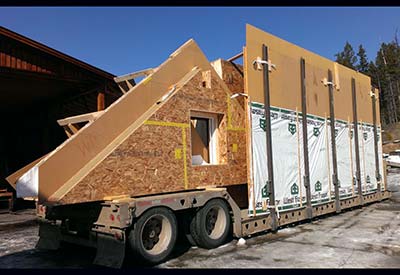All About N95 Masks

June 30, 2020
Although the situation is changing daily, various governments are concerned about a potential shortage of N95 masks. But what is an N95 mask? How to use it properly? Can it be reused? Here is a portrait of this protective equipment, which is of paramount importance in this time of health crisis.
What is an N95 mask?
The N95 is a protective mask with a fine mesh synthetic polymer filter. The number 95 means that the mask filters out 95% or less of airborne particles, including splashes that may contain bacteria or viruses. Oxygen molecules can pass through freely, allowing people who are wearing N95 masks to breathe properly.
A single-use mask
N95 masks are usually single-use masks. However, the Public Health Expertise and Reference Centre (INSPQ) states that “in the context of the COVID-19 pandemic and a real or feared shortage of respirators, it is possible to reuse an N95 mask if it is designated for the exclusive use of a health care worker.”
Proper use
N95 must remain in the container before use to avoid contamination. The INSPQ specifies that the mask must remain in place on the health care worker’s face during use and that it must be immediately replaced in its container as soon as it is removed. It should never be left on the neck, on the head or attached to an ear.
To reuse the mask
The INSPQ suggests limiting the number of uses to five.
Between uses, it is suggested that the mask be kept in a clean, air-permeable container such as a paper bag. It is important to wear a pair of clean gloves when using a used N95 mask. In case of accidental contact, hands should be washed.
It is also important to check the mask before wearing it. It is best to discard the facepiece if it is damaged, torn, contaminated or does not pass the leak test.
Please follow the public health and manufacturer’s recommendations regarding standards for use, reuse, and disposal of the mask.
Can masks be cleaned?
Researchers at Duke University in North Carolina recently announced that tests have shown that disinfection with specific products and following a certain protocol could kill germs and viruses without damaging the mask.
However, the INSPQ states that there is “no evidence, to date, that the disinfection or sterilization of this equipment can be supervised.” It will be interesting to follow the evolution of these tests and see if such cleaning could eventually be accepted. For the moment, it’s best not to take any chances.
Is the shortage real? If so, what is the cause?
China, which manufactures 50% of the world’s production of this safety equipment, was confronted with the COVID-19 epidemic earlier this year. It, therefore, limited its exports to cope with the crisis, which partly justifies the state of affairs.
With the global pandemic, the demand for N95 is constantly increasing. Many distributors such as SPI are having difficulty obtaining supplies and are dependent on manufacturers who are struggling to meet demand. Delivery times for both N95 masks and other personal protective equipment used to protect against COVID-19 can be expected. But rest assured that we are doing everything in our power to speed up the process to get the material to you as quickly as possible.
Authorities have called for rigorous and judicious management of the use of N95 masks to address a potential shortage. The following links will keep you informed of developments.
1. https://www.canada.ca/en/public-health/services/diseases/coronavirus-disease-covid-19.html
2. https://www.canada.ca/en/health-canada/services/drugs-health-products/medical-devices/masks-respirators-covid19.html
This article was first published online by SPI Health and Safety; The company’s mission is to be the single most valuable partner for companies that value health and safety in their work environment.
Photo by Jonathan J. Castellon on Unsplash.










![Guide to the Canadian Electrical Code, Part 1[i], 26th Edition – A Road Map: Section 10 – Grounding and Bonding](https://electricalindustry.ca/wp-content/uploads/2022/11/Guide-CE-Code-2.png)





